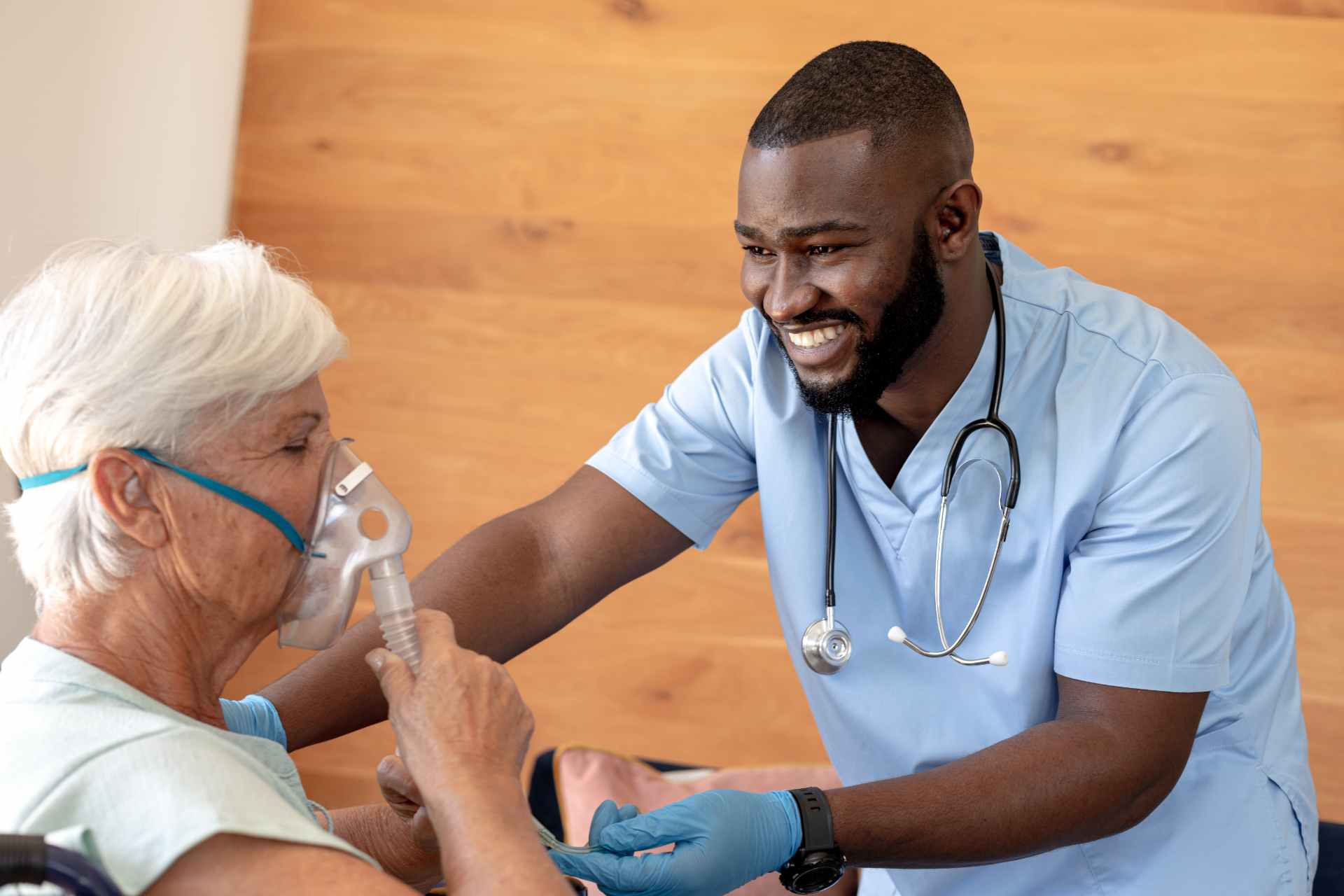Importance of respiratory therapists
Respiratory Therapy
While many people may not have heard of a respiratory therapist until the pandemic, they have been an integral member of the health care team for decades. They work with patients from newborn through hospice care, helping to manage patients with breathing and airway problems. A day in the life of a respiratory therapist might include:
Responding to emergency situations such as pre-term babies, cardiac arrests, trauma and rapid evaluations to assist with any airway issues/needs.
Performing Pulmonary Function Tests, which measures how well a patient’s lungs are functioning.
Providing pulmonary rehabilitation and educating patients and families about lung disease, asthma or Chronic Obstructive Pulmonary Disorder (COPD) so they can maximize their quality of life.
Managing ventilators and artificial airway devices for patients who can’t breathe normally on their own.
What does a respiratory therapist do?
Respiratory therapists help patients of all ages battle breathing problems. These problems not only include chronic conditions but can also involve people who need emergency respiratory care after accidents, heart attacks or strokes. Respiratory therapists manage patients on ventilators and assess patients’ blood-oxygen level. Additionally, they provide advice on respiratory care and teach people to use respiratory aids or other treatments.
Certified respiratory therapists (CRTs) tend to work with non-critical patients in respiratory departments. They administer various types of treatments such as chest physiotherapy or aerosol therapies. CRTs work with the patients directly managing their evaluations, but they don’t diagnose or create the treatment plans. They are part of an important team that balances disease prevention, management, patient education and treatment plans.
Respiratory therapists are very versatile professionals. Their jobs can include treatment plans for premature babies with lungs that haven’t fully developed, all the way to elderly patients battling disease. CRTs must have a wide knowledge base of the cardiopulmonary system to work with such an inclusive group of patients. They also must be experts in the machines and devices used to administer respiratory care treatments.
What are the benefits of respiratory therapy for seniors?
Importance of respiratory therapists. This rehabilitative therapy focuses on improving lung function, and is especially helpful to seniors because it:
Reduces the need for hospitalization/re-hospitalization
Helps boost a faster recovery
Improves general health and wellbeing
Reduces pulmonary complications
At United Methodist Communities at The Shores, our specialists and associates form a team that provides around-the-clock, holistic care to short-term rehab residents. Our team manages symptoms to increase comfort, improve sleep quality and take strain off the respiratory, cardiovascular and immune systems. Some of these vital tasks include monitoring and managing medications, preventing existing infections from worsening, and detecting more severe symptoms before cases worsen.
Growing Demand
As the number of patients with COVID-19 has grown, so has the demand for respiratory therapists.
CentraCare – Rice Memorial Hospital has thirteen respiratory therapists on staff. “We have a fantastic respiratory team that works hard to provide the best care possible,” shared Ohren. “However, like so many other areas, staffing can be an issue due to illness, injuries and current COVID quarantining requirements. Staff have been picking up extra shifts and we are using agency staff to help with our needs.”
But respiratory therapists can be hard to come by and they’re in high demand. “Once we get them here, it’s not a quick process to get them onboarded to learn our system.”
Caring for COVID-19 patients
Respiratory therapists have a very active role in helping patients affected with COVID-19. Many patients with COVID-19 experience shortness of breath and low oxygen levels. Respiratory therapists help to manage the devices that can deliver high levels of oxygen therapy. These devices might include:
Heated high flow nasal cannulas
Non-invasive ventilation (wearing a tight-fitting mask and using pressures to help with shortness of breath and oxygen delivery)
Ventilators
“We also work with nursing staff to educate the patients to try proning (laying on their stomach) as much as a patient can tolerate,” explains Ohren. Proning has been shown to be beneficial in increasing a patient’s oxygen levels. Importance of respiratory therapists.
“Sometimes a patient has a very severe case of COVID-19 and requires intubation and mechanical ventilation. Caring for these patients requires precise coordination between all members of the team. We monitor the various lab values, vital signs, lung pressures and work with the providers to optimize ventilator settings. If these patients also are good candidates for proning and/or inhaled medication to increase their oxygen levels, this process requires many hands, good communication, safe motions, and lots of patience. Respiratory therapists are in charge of the airway and ensure the endotracheal tube remains in place while the patient is rolled from their back to their stomach and back again.”
